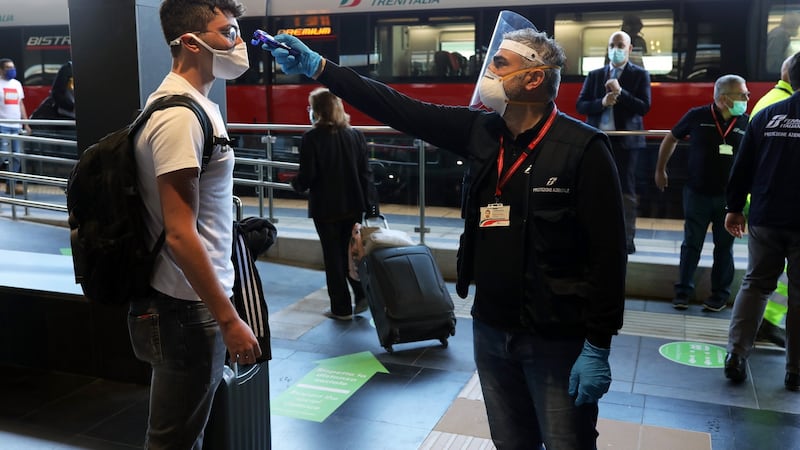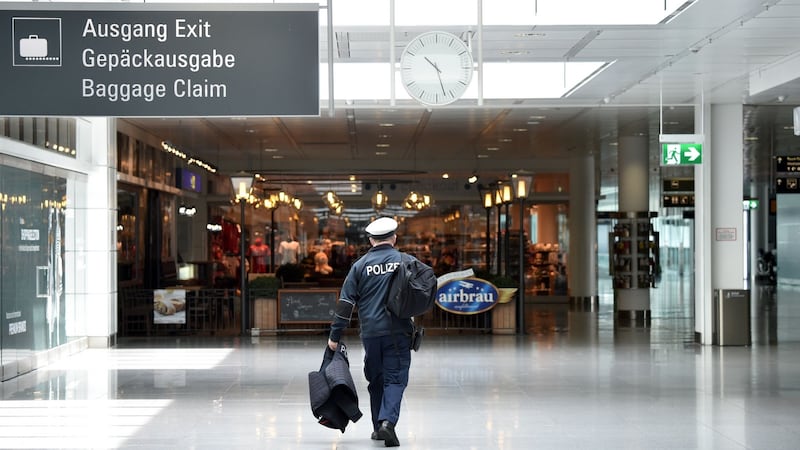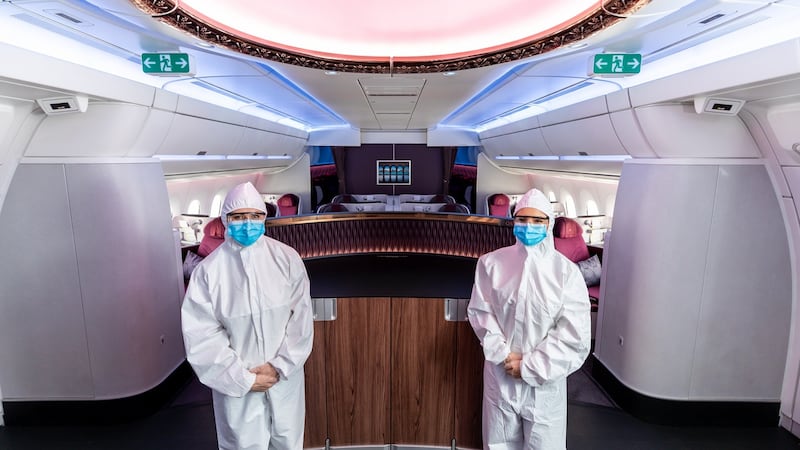After months of locked-down borders, countries that have stifled the coronavirus are trying to choreograph a risky dance: how to bring back visitors without importing another burst of uncontrolled contagion.
Estonia, Latvia and Lithuania dropped restrictions for one another on May 15th while keeping out everyone else. Australia and New Zealand are planning to revive unrestricted flights within their own “travel bubble”, which Fiji, Israel and Costa Rica are clamouring to join.
In China, cities are fast-tracking corporate charter flights, although Beijing remains sealed off. In Cyprus, tourists can get in only if they carry health certificates proving they tested negative for Covid-19.
International travel has always been a proxy for trust among nations and people, but the pandemic has poisoned the air. Now, relationships are being rebuilt under enormous economic pressure, with a wary eye on a pathogen that is not going away anytime soon.
The calculations of risk and reward vary. Some countries are eager to find ways to reopen doors to people from places, such as the United States, that are still struggling with the virus but are important sources of trade and tourism. Others are scanning the globe for safer, if less lucrative, partners.
The challenge for every country involves both epidemiology and psychology. Trips for business and pleasure must have enough restrictions to make travellers feel safe but not so many that no one wants to bother.
"We'll all get back to moving again but in a different way," said Scott Tasker, a general manager at Auckland Airport in New Zealand. "This is a global shock to the aviation and tourism industry, the likes of which we've never seen."

In interviews, airport executives, tourism officials and travel analysts, along with investors, doctors and government officials, described a momentous effort that is just starting to coalesce. They predicted a mix of precautions and incentives. Masks, fever checks, contact-tracing apps and even coronavirus throat swabs will make travel more agonising, even as discounts and smaller crowds soften the blow. A reduction in flights will mean more connections and longer journeys, testing travellers’ patience.
Baby steps
The baby steps toward a reopened world start with the healthy – the nations that have low rates of death and few active cases. The Baltic countries have gone first, and Australia and New Zealand are following a similar path. But even for countries with close ties, it is like starting from scratch. Border agencies, airports, airlines and health officials in Australia and New Zealand have spent more than a month trying to work out a proposal that would let travellers avoid the mandatory 14-day quarantine now in place for a smattering of international arrivals. They hope to have the system up and running by September.
Tasker, the Auckland Airport official, said the biggest hurdle was making sure that local transmission of the virus was as close to eliminated as possible. Beyond that, travellers can expect new protocols and constant reminders about social distancing, health and hygiene from booking through return. Australia’s coronavirus tracking app, CovidSafe, could also be used to share location data between both countries.
If it works for the two island neighbours, the bubble could grow to include other locations.
Many European countries are also starting out with a restricted guest list. Denmark and Norway are opening to each other June 15th, for example, but are excluding Sweden, where a looser lockdown has let the virus proliferate. With every phase of reopening, officials said, more movement means more risk and more work, for governments but also travellers.

"It's just not going to be as free-flowing and spontaneous as it once was," said Margy Osmond, chief executive of Australia's largest tourism association and co-chair of the group working on travel between that country and New Zealand. "I don't know that it will be more expensive – the jury is still out on that – but it will mean the average traveller has to take more responsibility."
So will everyone else involved with travel. At many of the world’s busiest airports, which are just starting to see upticks in traffic after declines of 90 per cent or more, all employees now wear masks and gloves. In Dubai’s giant mall of an airport in the United Arab Emirates, all arriving passengers are scanned for fevers with thermal imaging technology, which is also being rolled out at transport hubs in Europe and the United States.
Airlines are instituting their own forms of protection. All over the world, they are reducing food and drink service (further diluting its charms) and prioritising masks for everyone. Ryanair requires that passengers ask permission to use the bathroom so that lines do not form.
Higher-risk
Smaller-scale collaborations are also beginning to work out what to do with travellers from higher-risk countries. In June, 500 volunteers will fly from San Francisco to Taipei, the capital of Taiwan, as part of a study by Taiwanese officials and Stanford University. The passengers will be tested for the virus before boarding and then three, five, seven, 10 and 14 days after arrival. Researchers hope to figure out what is the latest day a positive test could emerge – with the goal of shortening the current 14-day quarantine.
"The most important thing is for travellers to feel safe to fly again and for the countries receiving the travellers to feel that they have done a good job in protecting their borders," said Dr Jason Wang, director of the Center for Policy, Outcomes and Prevention at Stanford Medicine.
Some companies are already embarking on journeys of their own. In April, business travel was the first thing to open up between South Korea and some parts of China. Last week, a group of German businesses chartered a flight to Shanghai with 200 workers, some being “fast-tracked” with proof of a negative test and an abbreviated quarantine.

Private jet use is also surging – why share a plane if you don’t have to? – but even for the 1 per cent, first-class treatment may include testing before you go, masks on board and a couple of days locked in quarantine, followed by more screening. A passenger on that flight from Germany tested positive for the virus on Sunday.
No wonder analysts expect international travel to recover with the speed of a casual stroll. "We think short-haul international comes back in the next two to three years, but the long-haul stuff comes back in five to seven years," said Helane Becker, managing director and senior airline analyst at Cowen, a New York investment bank. Even that may be optimistic. While places such as Sicily and Japan are looking at flight or lodging subsidies to lure visitors, long flights in a mask have limited appeal. And the white-collar crowd – in finance, in consulting – that once travelled without much thought has discovered that it can get the job done without being away from home for 100 or more days a year.
Old habits
Old habits in corporate travel will eventually return, said David Barger, the former chief executive of JetBlue, but only after new norms and stability emerge. "If you're the person who travels a lot, you want predictability," he said. "Until there's certainty, you'll have people saying, 'I'll do the Zoom call, or instead of six trips a year, maybe I'll do two.'
So perhaps the real return to travel will begin closer to home. In the car. For the foreseeable future, places that were popular with both foreign tourists and locals – Byron Bay in Australia, Disney World, the French Riviera – will probably look more like they did in the 1970s, before deregulation made air travel more affordable. Think of highways with cars packed full of gear and children in the back asking "Are we there yet?"
Some countries, including New Zealand, have set aside money for a tourism reset, encouraging providers to serve local customers and higher-value visitors. Cruise ships, whose image has been battered by coronavirus outbreaks, are also rapidly adapting, with increased spacing among everyone on board. But some regular travellers have learned that they can be perfectly happy not travelling at all. Paul Davies, a respected physicist who teaches at Arizona State University, spent years bouncing around to science conferences and lectures. But when the pandemic hit, he was in Sydney, where he used to live – and that is where he was quite happy to remain.
He noted that during World War II, when travel was severely constricted, great discoveries occurred as the world’s sharpest minds stayed home and mulled the universe. “Many of us have been saying for years that we have too many committees, far too many meetings and not nearly enough quiet thinking time,” Davies said.
“Jetting around the world and doing all these meetings – personally I find myself a bit uncomfortable doing that now. And I think that if people get more into the habit, this could be a better way of conducting our affairs.”











